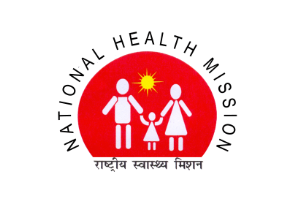- Skip to main content
- Skip to navigation
- Screen Reader Access
- Text Size
- Select Theme Default Theme Yellow Theme Pink Theme Blue Theme
- हिंदी में

The National Health Mission (NHM) envisages achievement of universal access to equitable, affordable & quality health care services that are accountable and responsive to people's needs.

Result for Walk in Interview of Medical Officers and Specialists held on 07-02-2025
Corrigendum for order dated 12-02-2024 for recruitment of Specialists on You Quote We pay Model
"Order for the candidates selected in the interview (You Quote We Pay Model) held on 01-02-2025"
Vaccancies of MBBS Medical Officers under NHM Uttarakhand-05/02/2025
MMU Activities in Uttarakhand with cooperation with The HANS Foundation
|
Communities in Uttarakhand follow a patriarchal system and Female foeticide is the result of high preference for son and patriotic societies. Education is helpful in the development of each area but on the issue of increasing female foeticide no impact of education can be seen. Female foeticide is a more prevalent in the cities than in the villages and educated people are involved in this heinous crime. Facing the problem of declining child sex ratio in the state, the Uttarakhand has observed steep decline in the juvenile sex (0-6 years) ratio during the last decade. In the present Census of 2011, the juvenile sex ratio has declined from the 908 of Census 2001 to 886 girls per thousand boys. The provisional figures of Census 2011 revealed that major decline is observed in the hilly region like Pithoragarh, Champawat, Rudraprayag, Chamoli, Tehri and Pauri Garhwal districts. The below table gives a contrast comparison of juvenile sex ratio in the state of Uttarakhand between last two census. The district wise child (0-6 year) sex ratio in the state of Uttarakhand
The implementation of PC & PNDT Act in Uttarakhand is included as part of the RCH Programme under the National Health Mission (NHM). |
|
S.No. |
District |
NFHS-4 (2015-16) (Children Born in last 5 Year) |
NFHS-5 (2020-21) (Children Born in last 5 Year) |
|
1 |
Almora |
986 |
1444 |
|
2 |
Bageshwar |
879 |
940 |
|
3 |
Chamoli |
950 |
1026 |
|
5 |
Champawat |
991 |
926 |
|
5 |
Dehradun |
832 |
823 |
|
6 |
Haridwar |
External SitesNHM UttarakhandProgrammesHit Counter0000705727Since: 01-01-2011 |